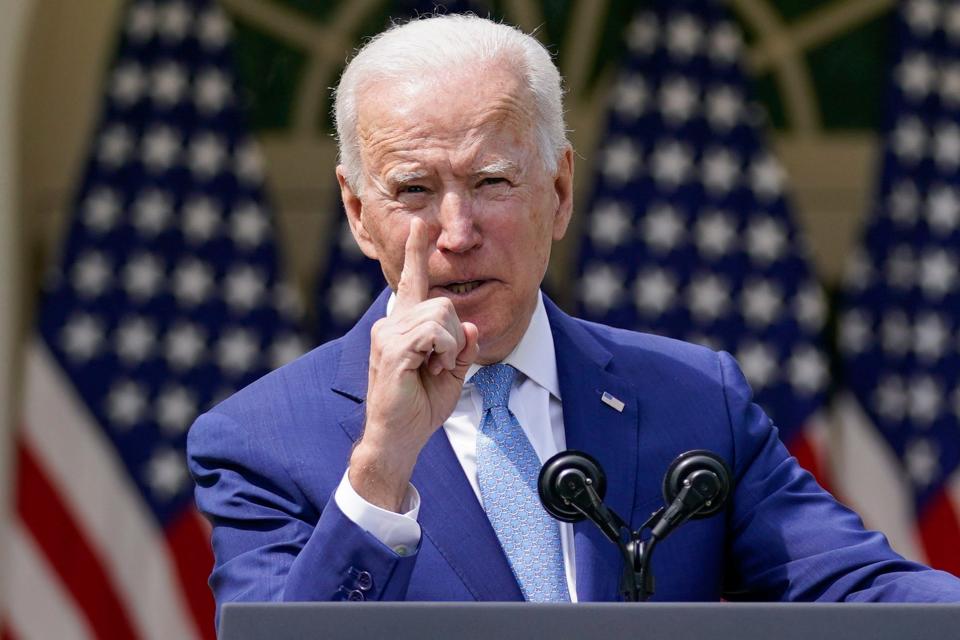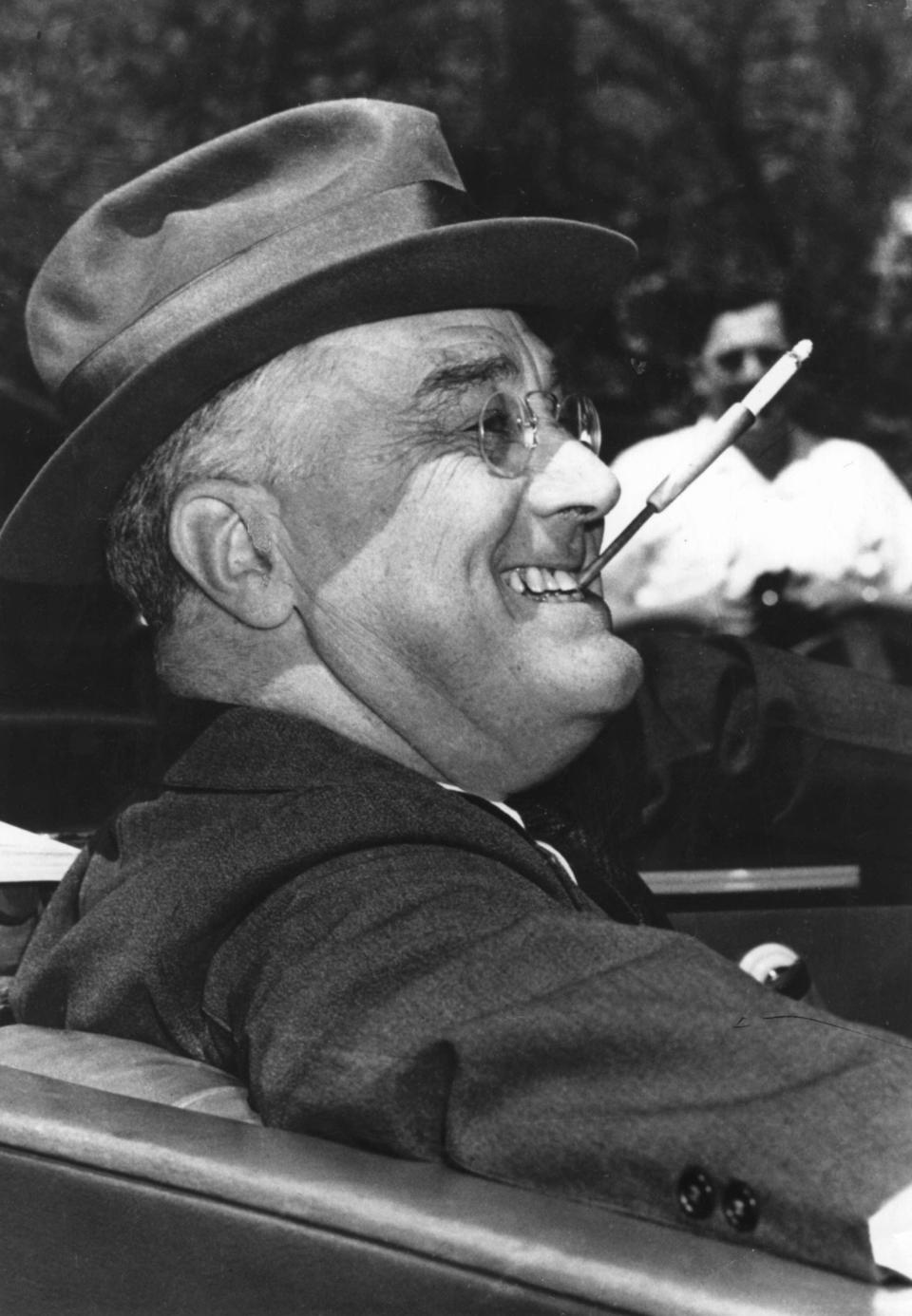Presidents’ first 100 days: Meaningful milestone or debunked benchmark?

President Franklin Roosevelt served an unprecedented 4,422 days in office, but his first 100 set a benchmark by which his successors are inevitably measured. The milestone’s origin in Franklin D. Roosevelt’s presidency coincided with the convergence of a worldwide economic depression, a Midwest climate crisis and an activist chief executive who created a bureaucratic behemoth to address the disasters. Americans would henceforth turn to the modern, some would call it the “imperial,” presidency to address the nation’s ills.
FDR declared in his first inaugural address that he was prepared to exercise “broad executive power to wage a war against the emergency.” His 1932 victory over the passive Herbert Hoover signaled the people’s “mandate that they want direct, vigorous action. …They have made me the present instrument of their wishes,” Roosevelt concluded. A few months later, he referred to “the crowding events of the hundred days which had been devoted to the starting of the wheels of the New Deal.”
SUBSCRIBE: Help support quality journalism like this.
With Democratic Party majorities in both houses of Congress, FDR signed an unsurpassed 76 bills into law by the 100-day mark, and he managed to calm the nation with his patented fireside addresses, delivered in soothing tones that supporters found accessible despite their patrician lilt.
Winston Churchill observed that meeting FDR was like uncorking your first bottle of champagne. With the unemployment rate at 25%, the nation rallied to his effervescent personality. His jaunty cigarette holder, broad smile and upturned face radiated confidence. “Happy Days Are Here Again,” his campaign theme song, seemed truly attainable. The Roosevelt brand was launched into history.
Window of great opportunity
This image so embodied American optimism that a Time magazine cover featured it with President-elect Barack Obama’s face superimposed over FDR’s visage, just after the historic election of the first Black president.

The 2008 financial collapse, which threatened another Great Depression, prompted Obama’s “hope" and "change” campaign themes. They resonated with a desperate electorate. He echoed Roosevelt’s inaugural clarion call in his own address: “The state of our economy calls for action, bold and swift. And we will act, not only to create new jobs, but to lay a new foundation for growth. We will build the roads and bridges, the electric grids and digital lines that feed our commerce and bind us together.”
Just shy of the one-month mark in office, Obama signed the 2009 American Recovery and Reinvestment Act to stimulate the economy with roughly $800 billion in tax cuts and new spending.
The 100-day trial is now inextricably embedded in our presidential politics. When, like FDR, Obama and Joe Biden, the new chief executive faces multiple crises, he feels compelled to promise rapid responses and results.
Biden’s campaign and transition team focused on the COVID-19 relief package (signed on March 11), vaccinating 100 million Americans by Day 100 (meeting the goal on Day 59 and doubling it) and introducing a $2 trillion infrastructure bill (late March). And let’s not forget the slew of executive orders that activist presidents can sign unilaterally, starting on Day One of their administrations.
We should have known: I was a first responder at Chernobyl. It should have prepared America for disaster.
Presidents have embraced the measurement as proof of their initial efficacy, but does it correlate with success in office and in the eyes of history?
FDR won four presidential terms, and scholars rank him among the three greatest presidents (along with George Washington and Abraham Lincoln), so his productive first 100 days were indeed a positive and accurate harbinger.
Hot out of the gate
Approval ratings provide one measure of how the electorate views the president’s earliest performance. Since Dwight Eisenhower, four chief executives (Jimmy Carter, Bill Clinton, Obama and Donald Trump) have seen drops in their ratings from inauguration to the 100-day mark. For Carter and Trump, the decline might have foreshadowed their reelection losses. Yet Clinton and Obama each earned second terms.
Muddled campaign: Caitlyn Jenner's run for California governor is about celebrity, not transgender equality
Despite the best-laid plans for early triumphs, disaster can befall presidents in the first months. John F. Kennedy’s ill-fated Bay of Pigs invasion in April 1961 devastated him — but because he accepted blame as “the responsible officer of the government,” his approval soared to 83%.
Ronald Reagan nearly died from an assassination attempt in March 1981. His courage and grace in the face of death earned him a 17-point surge in approval ratings that reflected bipartisan admiration in his first 100 days.
President Biden’s 100-day milepost falls on the eve of this year’s Kentucky Derby. If media and pundits cover elections as if they were horse races, why not continue the metaphor? Does the new president bolt from the starting gate quickly and smoothly, hitting his stride early? Or does he stumble from the post and have to make up ground as his opponents race ahead? Is he bumped by others on the track or hemmed in by circumstances? Does he set the wrong pace and run out of steam as the race progresses? Is the track muddy and difficult to gain traction on? Or is it lighting fast?
The Derby covers 1.25 miles; an administration lasts at least four years. The greatest presidents take the lead and never relinquish it, even if the ground they cover is occasionally sloppy. Yet others, like Clinton, endure early stumbles to earn another 1,461 days in the winner’s circle, also known as the Oval Office.
Barbara A. Perry is Gerald L. Baliles Professor and Director of Presidential Studies at the University of Virginia’s Miller Center. Follow her on Twitter: @BarbaraPerryUVA
You can read diverse opinions from our Board of Contributors and other writers on the Opinion front page, on Twitter @usatodayopinion and in our daily Opinion newsletter. To respond to a column, submit a comment to letters@usatoday.com.
This article originally appeared on USA TODAY: The history of a president's first 100 days: A meaningful milestone

 Yahoo Sports
Yahoo Sports 